-
PDF
- Split View
-
Views
-
Cite
Cite
Content Snapshots, Annals of Botany, Volume 127, Issue 2, 1 February 2021, Pages i–ii, https://doi.org/10.1093/aob/mcaa205
Close - Share Icon Share
Pleurogram: a seed functional trait acting from maturation to germination (Botanical Briefing)
Annals of Botany 127: 167–174, 2021
doi: 10.1093/aob/mcaa161
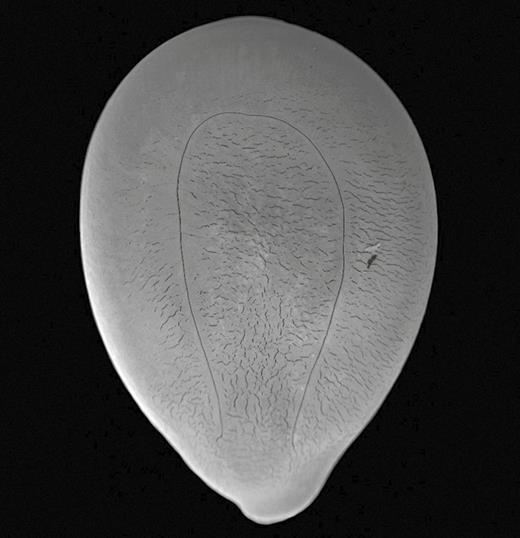
The seeds of several legume species have a mark on their faces which is referred to as a ‘pleurogram’, but the reason for the presence of this mark is not clear. Rodrigues-Junior et al. investigate and provide an overview of the structure and function of the pleurogram. They show that it can appear in seeds as a single or multiple structure and may act from maturation to germination. As a hygroscopic valve, it regulates dehydration during seed maturation. As a pathway for water entry into the seed, the pleurogram acts as a water gap in seeds with physical dormancy, thereby regulating dormancy-break/germination.
Authors: Ailton G. Rodrigues-Junior, Carol C. Baskin, Jerry M. Baskin, and Orlando C. De-Paula
Disturbance reinforces assembly processes across spatial scales (Research in Context)
Annals of Botany 127: 175–190, 2021
doi: 10.1093/aob/mcaa162
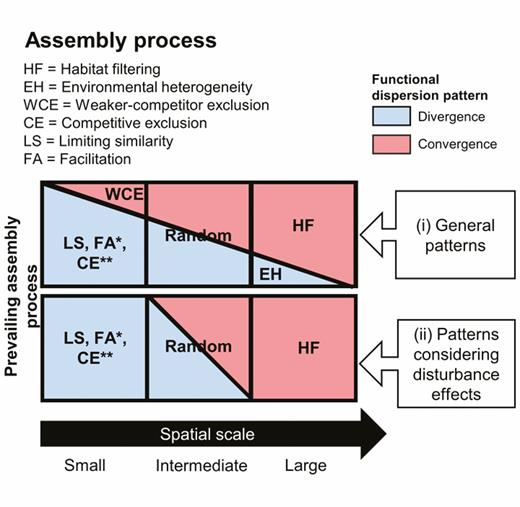
Disturbance and spatial scale influence community structure and assembly. However, there is a paucity of empirical research and a lack of predictive models concerning their interactive effects on trait-based assembly processes. Escobedo et al. propose a conceptual model hypothesizing that disturbance reinforces trait assembly patterns across spatial scales. They support the conceptual model using field data, a quantitative literature review, and meta-analysis.
Authors: Víctor M. Escobedo, Rodrigo S. Rios, Yulinka Alcayaga-Olivares, and Ernesto Gianoli
Variation in phytolith shape analysed by geometric morphometrics
Annals of Botany 127: 191–201, 2021
doi: 10.1093/aob/mcaa102
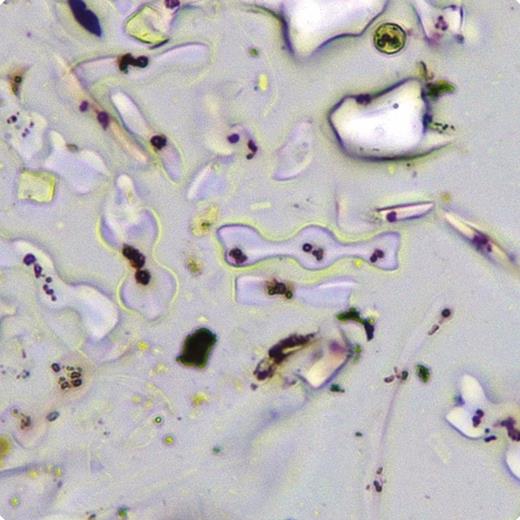
For the reconstruction of past vegetation and environmental conditions, an understanding of how the shape and size of grass phytoliths vary among populations or even within a single specimen is of key importance. Hošková et al. apply landmark-based geometric morphometrics to decompose different sources of phytolith shape and size variation in two grass species, Brachypodium pinnatum and B. sylvaticum (Poaceae). The results show that most variation in phytolith shape is interspecific.
Authors: Kristýna Hošková, Adéla Pokorná, Jiří Neustupa, and Petr Pokorný
For a commentary on this article, see this issue pp. iii–iv.
Species-specific flowering phenology responses to experimental warming
Annals of Botany 127: 203–211, 2021
doi: 10.1093/aob/mcaa156
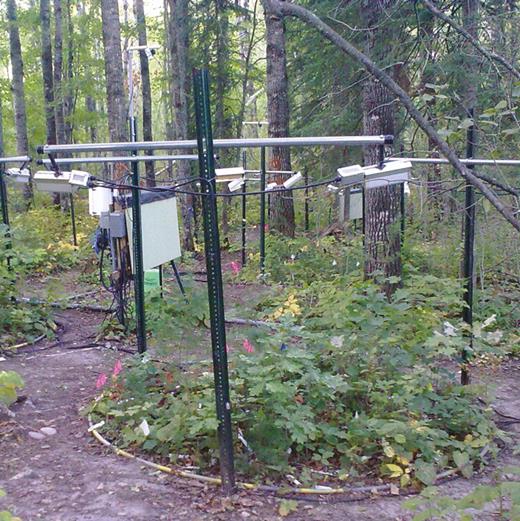
Climate change will continue to bring warmer temperatures and altered rainfall patterns. Phenology, the study of the timing of biological events, is triggered by such climate conditions. Rice et al. investigate the impacts of climate change on the flowering phenology of northern herbaceous plant species. Herbaceous plants were naturally occurring inside 36 experimental plots. Treatments included three levels of warming (ambient, +1.6°C, +3.1°C) crossed with two rainfall manipulations (ambient and drought). Warming advanced flowering. Altered rainfall primarily impacted autumn blooming species.
Authors: Karen E. Rice, Rebecca A. Montgomery, Artur Stefanki, Roy L. Rich and Peter B. Reich
The role of individual variation on plant reproductive success
Annals of Botany 127: 213–222, 2021
doi: 10.1093/aob/mcaa163

Plant individuals within a population differ in their phenology and interactions with pollinators and individual differences may affect the reproductive success of plants with specialized pollination systems. Soares et al. evaluate whether individual specialization in phenology and in pollination affect the reproductive success of Trembleya laniflora (Melastomataceae), a plant buzz-pollinated by crepuscular bees. They find that individual generalization in the interactions with pollinators enhances the reproductive success of central individuals with higher pollinator species richness, showing that individual levels of generalization are key to maintaining the reproductive population of a species with a specialized pollination system.
Authors: Natalia Costa Soares, Pietro Kiyoshi Maruyama, Vanessa Graziele Staggemeier, Leonor Patrícia Cerdeira Morellato, and Márcio Silva Araújo
Long-distance dispersal of the beach strawberry, Fragaria chiloensis, from North America to Chile and Hawaii
Annals of Botany 127: 223–229, 2021
doi: 10.1093/aob/mcaa165
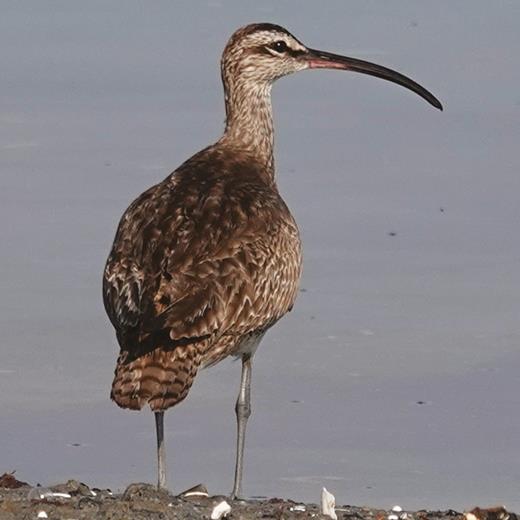
The beach strawberry, Fragaria chiloensis (Rosaceae), is found in a narrow coastal band from the Aleutian Islands to central California, and then jumps thousands of kilometres—all the way to Hawaii and Chile. It has long been speculated that shorebirds were the pivotal players in this long-distance dispersal. Hancock and Prince provide strong evidence that three shore bird species are the most likely vectors: Pacific Golden-plovers to Hawaii, Whimbrels to Chile, and Ruddy Turnstones to both Chile and Hawaii.
Authors: James F. Hancock and Harold H. Prince
Photo credit: Marie Jordan
Slippery flowers deter nectar-thieves
Annals of Botany 127: 231–239, 2021
doi: 10.1093/aob/mcaa168
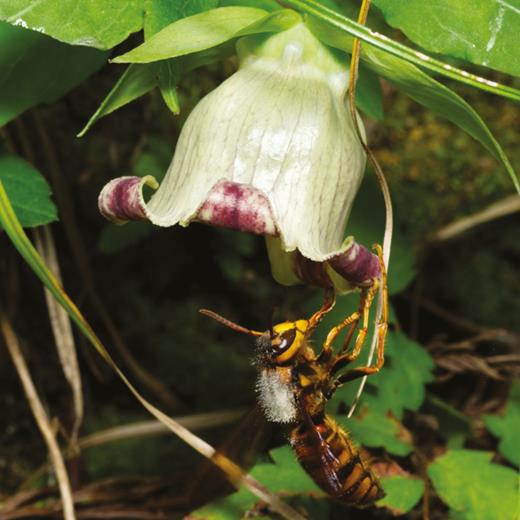
Ants attracted to flowers not only steal nectar but also attack other visitors and reduce pollination success. Takeda et al. report that the corolla of Codonopsis lanceolata (Campanulaceae) and the tepals of Fritillaria koidzumiana (Liliaceae) are slippery to ants. The slippery perianth surfaces were densely covered by wax crystals and, when wiped off with hexane, the flowers lost slipperiness. Artificially bridging the slippery area with non-slippery material allowed ants to invade flowers more frequently, suggesting that the slipperiness hinders floral entry by ants. Floral defense based on slipperiness has rarely been tested experimentally, but may be widespread among flowering plants.
Authors: Kazuya Takeda, Tomoki Kadokawa, and Atsushi Kawakita
Facilitation in an alpine meadow on the Tibetan Plateau
Annals of Botany 127: 241–249, 2021
doi: 10.1093/aob/mcaa170
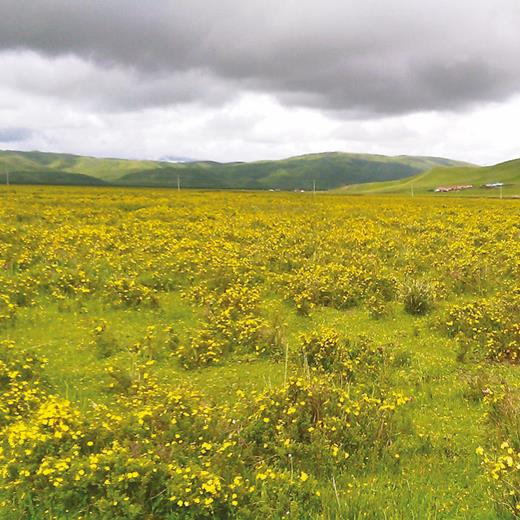
Wang et al. assess how direct and indirect facilitation of Dasiphora fruticosa (Rosaceae) affects community productivity via taxonomic and functional diversity in an alpine Qinghai–Tibet Plateau (QTP) meadow. They find that a range of traits play a primary role over taxonomic diversity and the community-weighted mean of traits in terms of shrub effects on community productivity. They reveal that the mechanism of facilitation of community productivity in this alpine community is expanding the realized niche. Facilitators can decrease the negative effects of environmental filters on trait values in harsh environments, thereby improving ecosystem functioning.
Authors: Xiangtai Wang, Richard Michalet, Lihua Meng, Xianhui Zhou, Shuyan Chen, Guozhen Du, and Sa Xiao
The inter-relationship between leaf gas film thickness, SUB1 QTL, and submergence tolerance in rice
Annals of Botany 127: 251–265, 2021
doi: 10.1093/aob/mcaa171
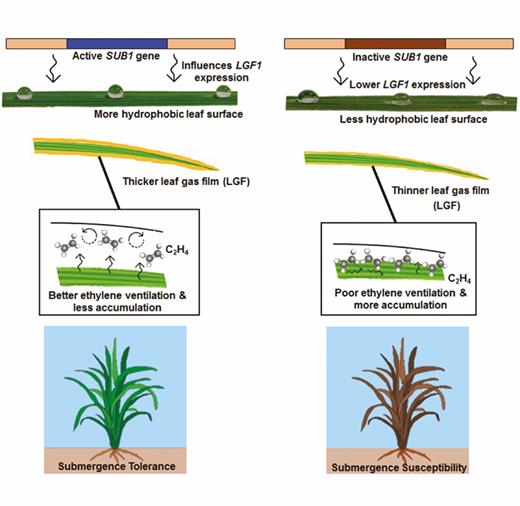
Leaf gas film (LGF) thickness and SUB1 gene action largely govern submergence tolerance in rice. Here, Chakraborty et al. report that the presence of SUB1 QTL positively influences expression of the LGF1 gene, which increases the epicuticular wax content and surface hydrophobicity of the leaves. As a result, thicker LGF was observed in SUB1 genotypes as compared to plants lacking it. Thicker LGF helps with ethylene ventilation, which results in less in planta accumulation of ethylene, which in turn slows down underwater leaf senescence and the carbohydrate breakdown process under complete submergence. Artificial removal of the gas film resulted in greater ethylene accumulation and increased plant mortality even in SUB1 containing genotypes.
Authors: Koushik Chakraborty, Akankhya Guru, Priyanka Jena, Soham Ray, Arti Guhey, Krishnendu Chattopadhyay, and Ramani K. Sarkar
Two modes of pollinator-driven evolution in Balsaminaceae
Annals of Botany 127: 267–280, 2021
doi: 10.1093/aob/mcaa184
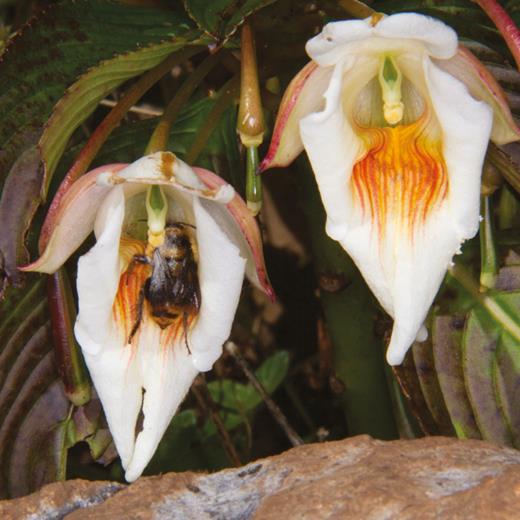
Pollinators can drive the evolution of flowers in several ways. In this study, Ruchisansakun et al. quantify two different types of pollinator-driven evolution in Balsaminaceae (including the species rich genus Impatiens). They first characterize associations between flower features and pollination systems for 58 species based on published studies. Using this information, they assign 282 mostly Asian species to pollination syndromes, and then reconstruct the phylogenetic relationships among these species to quantify the number of shifts in pollination syndromes, and the number of times asymmetrical corollas have evolved (which is a proxy for the divergent use of the same pollinator). Pollinator shifts are more frequent, and the evolution of asymmetrical corollas typically occurs in ancestrally bee-pollinated species, presumably because bee bodies are particularly suitable for precise pollen placement on different parts.
Authors: Saroj Ruchisansakun, Arne Mertens, Steven B. Janssens, Erik F. Smets, and Timotheüs van der Niet



